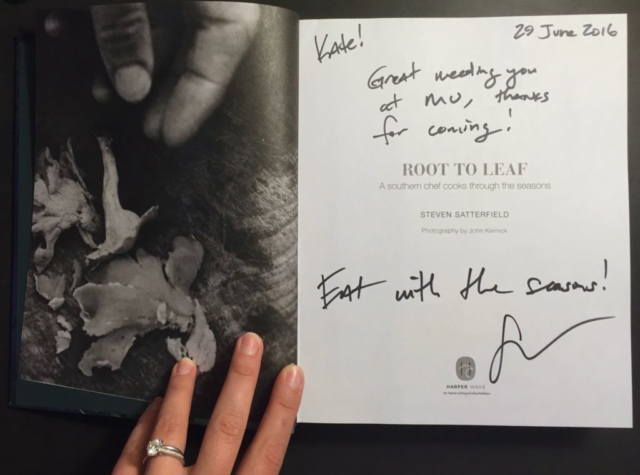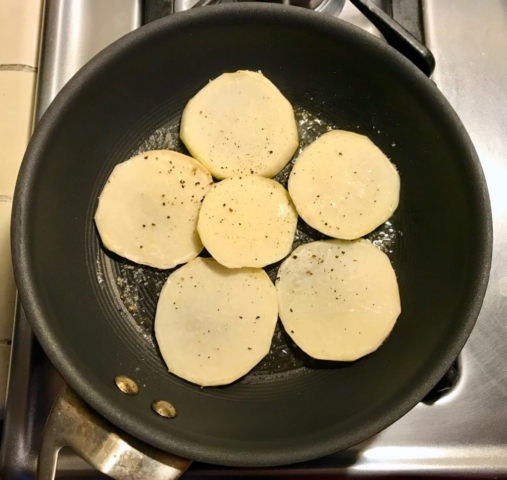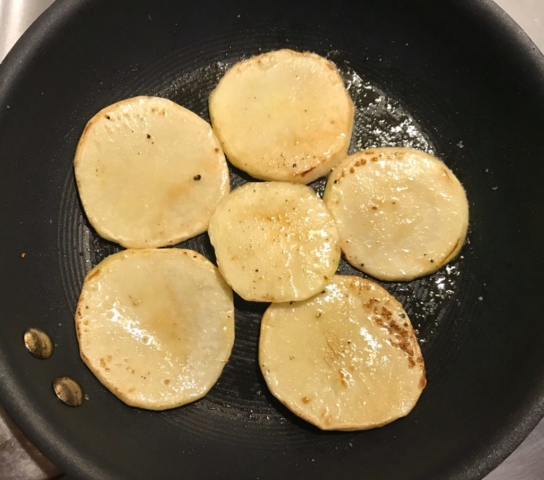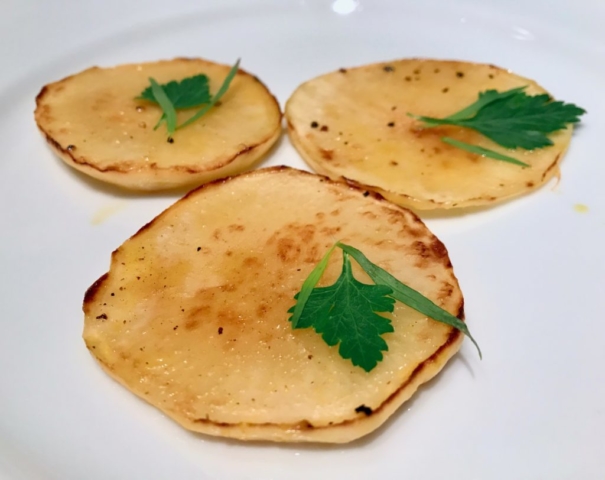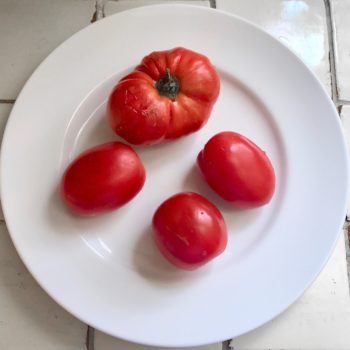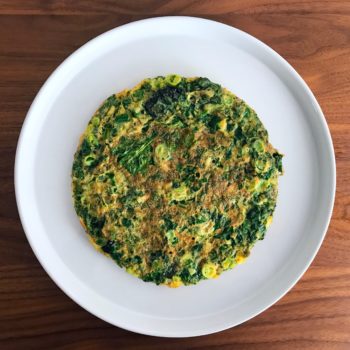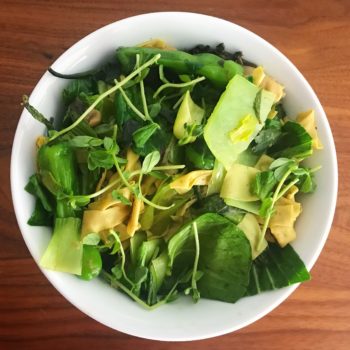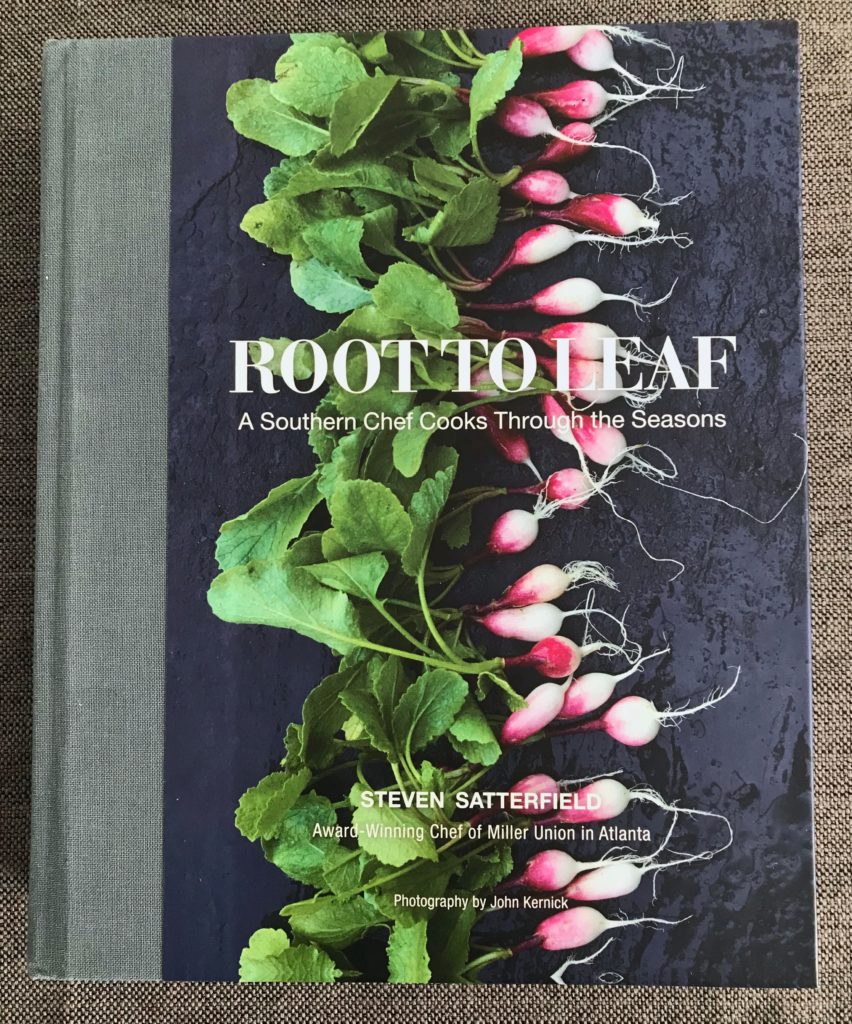
Root to Leaf: A Southern Chef Cooks Through the Seasons
Steven Satterfield
Photographs by John Kernick
2015
Purchased from the restaurant Miller Union and signed to me personally by Chef Satterfield
Recipes I’ve cooked: Mostly, I’ve used this as a reference book for buying, storing, and preparing vegetables and fruits, not a cookbook—though there are many enticing recipes
Recipes I want to cook: All of them, really
Difficulty to source: Easy
Difficulty to cook: Easy
I love Root to Leaf because I don’t so much cook from as live by it—especially at the grocery store, farmer’s market, and fruit stand. If you’ve ever stood in front of a display of produce eager to pick out the best tomato, squash, or melon, and squeezed, tapped, or smelled a few before finally admitting to yourself you have no idea what you’re supposed to be looking for in a fresh tomato, squash, or melon—you need this.
And you especially need this when you get home and need to store it somewhere. Where, and how, and for how long? And what do you do when it’s not a tomato, squash, or melon, but when it’s a kohlrabi, celery root, or persimmon?
I had the pleasure of eating at Satterfield’s Atlanta restaurant Miller Union two year agos, and I still remember my salad of seasonal vegetables with with green garlic breadcrumbs, olive oil, and fromage blanc. I had a beautiful entree of a small game bird (likely quail) cooked to a perfect medium with fresh succotash and northern Italian style blueberry mostarda, too, but the salad changed everything for me. (I hope you’ll join me on the road trip to Atlanta, but you can take the shortcut here.)
I was in the south for a business trip, driving from Nashville to Atlanta and then to Charlotte. I caught up on Splendid Table podcasts on my way to Atlanta, with a convenience store styrofoam cooler strapped into the back seat of my rental car packed with Hattie B’s “shut the cluck up” dark meat Nashville hot fried chicken, macaroni and cheese, and coleslaw. As I approached Atlanta, Lynne Rossetto Kasper interviewed Satterfield about seasonal eating, and everything he was saying just resonated. I’d heard it all before, but with him, I finally listened. No more asparagus in December. At my earliest opportunity, I confirmed that his was the restaurant close to my event and hotel that I’d put down as a “maybe” in my advance research for dinner if I had time. As soon as my work event ended, I drove straight there.
My signed cookbook and, without exaggeration, life changing salad at Miller Union
For the salad, a thick layer of salty, soft, stucco-textured cheese supported a beautiful tuft of sweet carrot ribbons, halved red cherry tomatoes, bursting pea pods, perky micro greens, and aromatic herb leaves; the breadcrumbs were garlicky and crunchy and everywhere on the plate. I’ve always eaten a lot of vegetables, but suddenly I was really thinking about them. This plate was indulgent in a way a basket of French fries could never be.
It turned out to be one of those perfect restaurant experiences where my meal surprised me and a nearby couple struck up a conversation with me and my waiter told me I was really fun to serve—and then he sent Satterfield out, and he was the nicest chef I’ve ever talked to.
I am so happy Steven Satterfield won the James Beard Award for best chef in the southeast this year. His biography encompasses architecture school at Georgia Tech, a stint as a singer-songwriter and guitarist for alt-rock band Seely, and cancer. Food was his calling and, he says, his cure. As they might say in Atlanta, for that, we are all very blessed.
Root to Leaf is divided into five sections: spring, summer, fall, winter, and basics. The seasons are divided into chapters named for the vegetables and fruits that ripen then; spring, for example, includes asparagus, carrots, fennel, lettuces, onions and garlic, radishes, rhubarb, greens, peas, and strawberries. The basics are pie, tart, and pizza doughs, and popovers, crackers, and shortbread. His recipes are mostly large plants seasoned with small plants that occasionally call for widely available and usually humble ingredients like stock, cream, bacon, cheese, and coffee. I love the photography; everything is shot in soft light and cool shades, often against pale blue backdrops. The shades of emerald, fuchsia, and honey from one page to the next reminded me of Monet’s garden.
Satterfield is encyclopedic, and much of his book’s contents cannot be Googled. Of tomatoes, deep in the second page about them, he writes:
“If a tomato is ripe and you can’t use it for a day or two, refrigerate it; then pull it out an hour or so before you plan to serve so that it can come to room temperature. This method works especially well for expensive heirloom tomatoes or ripe cherry tomatoes, which both have a high water content and do not become mealy if chilled briefly. Beefsteaks and romas do not fare as well in the cooler and are best left at room temperature.”
I’ve always kept my grocery store clamshells of Sunburst yellow cherry tomatoes in the refrigerator crisper drawer and felt terrible about not storing them on my counter based on the adamancy of the collective internet, but no longer. Ditto for keeping a number of vegetables in the plastic bags I love tearing off their rolls at the grocery store; for many, that’s what they need.
My first kohlrabi
Root to Leaf is sure to be used only as a reference book by most home cooks when presented with a parsnip or pomegranate, but I recommend reading it in the same spirit as its title—cover to cover. Satterfield writes beautifully, sharing anecdotes from his formative years and histories of many vegetables and fruits. His section on chestnuts made me feel like I was waking up to street smells in Paris with him when he was twenty. (Bien fait to anyone who was. He’s very handsome.) The sunchoke was virtually unknown to the home cook until recently, so I was surprised to learn that Native Americans may have introduced Lewis and Clark to it. The possible etymology of its other name, the Jerusalem artichoke—it’s unrelated to the artichoke—is even more interesting.
Clearly, I love this cookbook. I cannot recommend Root to Leaf enough; it is an essential reference book, an unpretentious lifestyle guide, and a heartwarming hard-earned success story of a chef worth celebrating—all at once.

